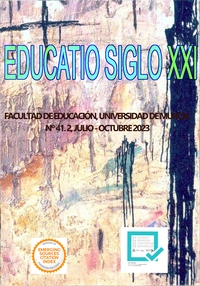La relación entre las actitudes de los estudiantes hacia el uso de la educación virtual y su nivel de satisfacción durante la pandemia de COVID-19
Resumen
El avance hacia nuevos enfoques de la educación superior, ha requerido a muchas universidades alrededor del mundo que emplean educación virtual en sus cursos. El objetivo de este estudio es investigar la relación entre las actitudes de los estudiantes frente al uso de educación virtual con el nivel de su satisfacción durante la crisis del covid-19. Este estudio fue diseñado como una investigación descriptiva aplicada. Una muestra aleatoria de 165 estudiantes fue recogida de la población de los estudiantes de pregrado de cursos de Ingeniería Técnica y de psicología (89 estudiantes técnicos y 76 estudiantes de psicología) de la Universidad Islámica Azad de Shahre Rey-Irán, durante el primer semestre de 2020-2021. para recopilar datos sobre la actitud y el nivel de satisfacción de los estudiantes, un cuestionario fue utilizado. el análisis fue realizado fue realizado a través de programa spss (versión 26), utilizando la correlación de Pearson y Prueba T para muestras independientes Los hallazgos indicaron que hay una relación significativa entre las actitudes hacia a la educación virtual y la satisfacción de todos los participantes. Además, no hubo diferencia entre las actitudes y el nivel de satisfacción hacia la educación virtual entre los dos grupos. Hay que tener en cuenta, que un análisis más preciso sobre la pregunta demuestra que la educación virtual ha creado más problemas en la comprensión de los conceptos principales para los estudiantes técnicos. Aunque ambos grupos opinaron que los exámenes on-line eran más apropiados dado las circunstancias de la pandemia, algunas dificultades como la velocidad de internet, los desafíos en cargar la hoja de respuestas y afectó sus actitudes en una manera negativa. Los resultados del estudio también demostraron que los estudiantes de psicología encuentran más desafiante usar el internet y plataformas en línea, comparado con estudiantes de ingeniería. Según los hallazgos de este documento, se puede suponer que al diseñar infraestructuras de e-learning si el material debe ser entregado de manera productiva y eficaz, hay que tener en cuenta el contenido educativo de las diferentes áreas de estudio.
Descargas
-
Resumen727
-
PDF502
Citas
Ahn, J. Y., Edwin, A. (2018). An e-Learning Model for Teaching Mathematics on an Open Source Learning Platform. Int. Rev. Res. Open Distrib. Learn, 19, 255–26. https://doi.org/10.19173/irrodl.v19i5.3733
Al-Akharas, Y. (2018). The Impact of the Application of e-Learning Strategy on Academic Achievement in Mathematics in Basic Grades in the Capital Governorate from the Perspective of Teachers of Mathematics. Dirasat: Educational Sciences, 45(4), 70-80. https://doi.org/10.17718/tojde.849882
Albano, G., Dello, U. (2019). GeoGebra in e-learning environments: A possible integration in mathematics and beyond. J. Ambient Intell. Humaniz. Comput. 10, 4331–4343. https://doi.org/10.1007/s12652-018-1111-x
Al-Saedy, M., Alkahaly, Kh., Alpraky, M., Albloshy, A., & Alkhrousy, H. (2017). The Effect of e- Learning in Teaching Mathematics on Academic Achievement and Attitude towards the Subject for Grade 5 Students in the Sultanate of Oman. International Journal of Educational Specialist. 6(4), 227-239.
Annelies, R., Pieter, V., Marieke, P., Ine, W., Wim, V., & Fien, D. (2020). Learning and instruction in the hybrid virtual classroom: An investigation of students’ engagement and the effect of quizzes. Computers & Education, 143, pp. https://doi.org/10.1016/j.compedu.2019.103682
Aristovnik, A., Keržič, D., Ravšelj, D., Tomaževič, N., & Umek, L. (2020). Impacts of the COVID-19 pandemic on life of higher education students: A global perspective. Sustainability, 12(20), 8438. https://doi.org/10.3390/su12208438
Askhamov, A. A. (2016). Use of E-resources of the Learning Environment in Teaching Mathematics to Future Engineers. International Journal of Environmental & Science Education, 11 (5), 673-684.
Bao, W. (2020). COVID‐19 and online teaching in higher education: A case study of Peking University. Human Behavior and Emerging Technologies, 2(2), 113–115. https://doi.org/10.1002/hbe2.191
Bawaneh, A. K. (2020). The satisfaction level of undergraduate science students towards using e-learning and virtual classes in exceptional condition covid-19 crisis. Turkish Online Journal of Distance Education, 22(1), 52-65. https://doi.org/10.17718/tojde.849882
Brodsky, M. W. (2020). E-learning Implementation. Available from: http://Ulysses learning.Com.
Chitra, A.P., Raj, M.A. (2018). E-Learning. Journal of Applied and Advanced Research, 3, 11-13. https://doi.org/10.21839/jaar.2018.v3iS1.158
Conceição, S. C. O. (2006). Faculty lived experience in the online environment. Adult education quarterly. 57(26), 26-45. https://doi.org/10.1177/1059601106292247
DeLone, W. H., and E. R. McLean. (1992). Information systems success: the quest for the
dependent variable Information System Research, 3(1), 60-95. https://doi.org/10.1287/isre.3.1.60
Dreyfus, H. (2010). About the Internet: A Philosophical Look at the Internet. Farsinezhad A, trans. Tehran: Saghi Publications. pp 20-85. [In Persian]
El Mamoun, B., Erradi, M., El Mhouti, A. (2018) Using an Intelligent Tutoring System to Support Learners’ WMC in e-learning: Application in Mathematics Learning. Int. J. Emerg. Technol. Learn, 13, 142–156. https://doi.org/10.3991/ijet.v13i12.8938
Farsinezhad A, trans. Dreyfus H. About the InternetTehran: Saghi Publications; 2010. p. 20-85. [In Persian]
Glenda, K., Joslyn, H., & Mariel, P. (2019). Virtually connected. International Teacher Magazine (IMT). It was accessed on 20/03/2020. https://consiliumeducation.com/itm/2019/06/22/virtuallyconnected/
Gunasinghe, A., Abd Hamid, J., Khatibi, A., & Azam, S. F. (2019). The adequacy of UTAUT-3 in interpreting academician’s adoption to e-Learning in higher education environments. Interactive Technology and Smart Education, 17(1), 86-106. https://doi.org/10.1108/ITSE-05-2019-0020
Habibi, A., Mukminin, A., Yaqin, L. N., Parhanuddin, L., Razak, R. A., Nazry, N. N. M.,
... and Fathurrijal, F. (2021). Mapping Instructional Barriers during COVID-19
Outbreak. Islamic Education Context. Religions, 12(1), 50. https://doi.org/10.3390/rel12010050
Hall, M. (2001). Realizing the Virtual Hamburge [Internet] [cited 2012 Des 13]. Available from: http://www.chet.org.zal
Händel, M., Stephan, M., Gläser-Zikuda, M., Kopp, K., Bedenlier, S., & Ziegler, A. (2020). Digital readiness and its effects on higher education students’ socio-emotional perceptions in the context of the COVID-19 pandemic. Journal of Research on Technology in Education. 52(5), 1–13. https://doi.org/10.1080/15391523.2020.1846147
Iyer, P., Aziz, K., & Ojcius, D. M. (2020). Impact of COVID‐19 on dental education in the United States. Journal of dental education, 84(6), 718-722. https://doi.org/10.1002/jdd.12163
Jimenez, E. C. (2020). Contextualized E-Learning Resource: A Tool for Stronger Academic Platform. International Journal of Case Studies in Business. IT, and Education (IJCSBE), 4, 2110-116. http://doi.org/10.5281/zenodo.4018344
Lee, B. C., Yoon J. O., & Lee, I. (2009). Learners’ Acceptance of e-Learning
in South Korea: Theories and Results. Computers & Education, 53, 1320-1329. https://doi.org/10.1016/j.compedu.2009.06.014
Levy, P. (2006). The Impact of Technology in Cyber Culture. Minneapolis: University of Minnesota Press [Internet]. 2006 [cited 2013 April 12]. Available from: https://circle.ubc.ca/bitstream/handle/2429/1333/WikiRevolutionCATaC2006.pdf?sequence
Mailizar, Almanthari, A., Maulinal, S., Bruce, S. (2020). Secondary School Mathematics Teachers’ Views on E-learning Implementation Barriers during the COVID-19 Pandemic: The Case of Indonesia EURASIA. Journal of Mathematics, Science and Technology Education, 16(7), 1-9. https://doi.org/10.29333/ejmste/8240
Malkawi, E., Bawaneh, A. K. (2021). Campus Off, Education On: UAEU Students’ Satisfaction and Attitudes Towards E-Learning and Virtual Classes During COVID-19 Pandemic. Contemporary educational technology, 13(1), ep283, https://doi.org/10.30935/cedtech/8708
Miltiadou, M., & Savenye, W. C. (2003). Applying social cognitive constructs of motivation to enhance student success in online distance education. Educational Technology Review, 11(1), 78-95.
Nicholas, A. J., Levy, Y. (2009). Empirical assessment of college students–athlete’s president in e-learning courses: a case of study of a U.S. National Association of Intercollegiate Athletics. Turkish online journal of distance education (TOJDE). 12(1), 14-25. https://doi.org/10.1016/j.iheduc.2008.10.003
Ozgur, Y. (2015). The Effects of “Live Virtual Classroom” on Students’ Achievement and Students’ Opinions about “Live Virtual Classroom” at Distance Education. The Turkish Online Journal of Educational Technology, 14(1), 108 – 115.
Papapicco, C. (2020). Informative Contagion: The Coronavirus (COVID-19) in Italian journalism. Online Journal of Communication and Media Technologies, 10(3), e202014. https://doi.org/10.29333/ojcmt/7938
Razzaghei, S. (2006). Factors affecting the development of virtual universities in Iran and its strategic status. Master's Thesis, School of Management, Tehran
University. (in Persian)
Romiszowski, AJ. (2004). How’s the E-learning Baby? Factors Leading to Success or Failure of an Educational Technology Innovation. Educational Technology, 44(1), 5-27.
Sahoo, K. K., Muduli, K. K., Luhach, A. K., and Poonia, R. C. (2021). Pandemic COVID-
: An empirical analysis of impact on Indian higher education system. Journal of
Statistics and Management Systems, 1-15. https://doi.org/10.1080/09720510.2021.1875571
Sarkar Arani, M. R. (2004). Policy of Education for the 21st Century in Developed and Developing Countries: Focus on Japan and Persian Gulf Region. Journal of International Cooperation Studies. 11(3), 101-130.
Sathiyamoorthi V., (2020). An Intelligent System for Predicting a User Access to a Web Based E-Learning System Using Web Mining. International Journal of Information Technology and Web Engineering (IJITWE), 15(1), 75-94. https://doi.org/10.4018/IJITWE.2020010106
Schroeder, C. (2003). New Students, New Learning Styles [Internet]. [cited 2011 June 12]. Available from: http://www.virtualschool.edu/mon/Academia/KierseyLearningStyles.html.
Sun, P. C., Tsai, R. J., Finger, G., Chen, Y. Y., & Yeh, D. (2008). What Drives a Successful e-Learning? An Empirical Investigation of the Critical Factors Influencing Learner Satisfaction. Computers and Education, 50(4), 1183-1202. https://doi.org/10.1016/j.compedu.2006.11.007
Tadesse, S., & Muluye, W. (2020). The Impact of COVID-19 Pandemic on Education System in Developing Countries: A Review. Open Journal of Social Sciences, 8, 159-170. https://doi.org/10.4236/jss.2020.810011
Umoh, J. B. & Akpan, E. T. (2014). Challenges of Blended E-Learning Tools in Mathematics: Students’ Perspectives University of Uyo. Journal of Education and Learning, 3(4), 60-70. http://dx.doi.org/10.5539/jel.v3n4p60
Wang, A. Y. & Newlin, M. H. (2012). Online Lectures: Benefits for the Virtual Classroom. T.H.E. Journal. It was accessed on 20/03/2020, http://www.thejournal.com/articles/15513
Zolfaghari, M., Mehrdad, N., Parsa Yekta, Z, Salmani Barugh, N., Bahrani, N. (2007). The Effect of Lecture and E-learning Methods on Learning Mother and Child Health Course in Nursing Students. Iranian Journal of Medical Education, 7(1), 31-39. http://ijme.mui.ac.ir/article-1-623-en.html
Derechos de autor 2023 Servicio de Publicaciones de la Universidad de Murcia

Esta obra está bajo una licencia internacional Creative Commons Atribución-NoComercial-SinDerivadas 4.0.
Las obras que se publican en esta revista están sujetas a los siguientes términos:
1. El Servicio de Publicaciones de la Universidad de Murcia (la editorial) conserva los derechos patrimoniales (copyright) de las obras publicadas, y favorece y permite la reutilización de las mismas bajo la licencia de uso indicada en el punto 2.
2. Las obras se publican en la edición electrónica de la revista bajo una licencia Creative Commons Reconocimiento-NoComercial-SinObraDerivada 4.0 Internacional (texto legal). Se pueden copiar, usar, difundir, transmitir y exponer públicamente, siempre que: i) se cite la autoría y la fuente original de su publicación (revista, editorial y URL de la obra); ii) no se usen para fines comerciales; iii) se mencione la existencia y especificaciones de esta licencia de uso.
3. Condiciones de auto-archivo. Se permite y se anima a los autores a difundir electrónicamente las versiones pre-print (versión antes de ser evaluada) y/o post-print (versión evaluada y aceptada para su publicación) de sus obras antes de su publicación, ya que favorece su circulación y difusión más temprana y con ello un posible aumento en su citación y alcance entre la comunidad académica. Color RoMEO: verde.










